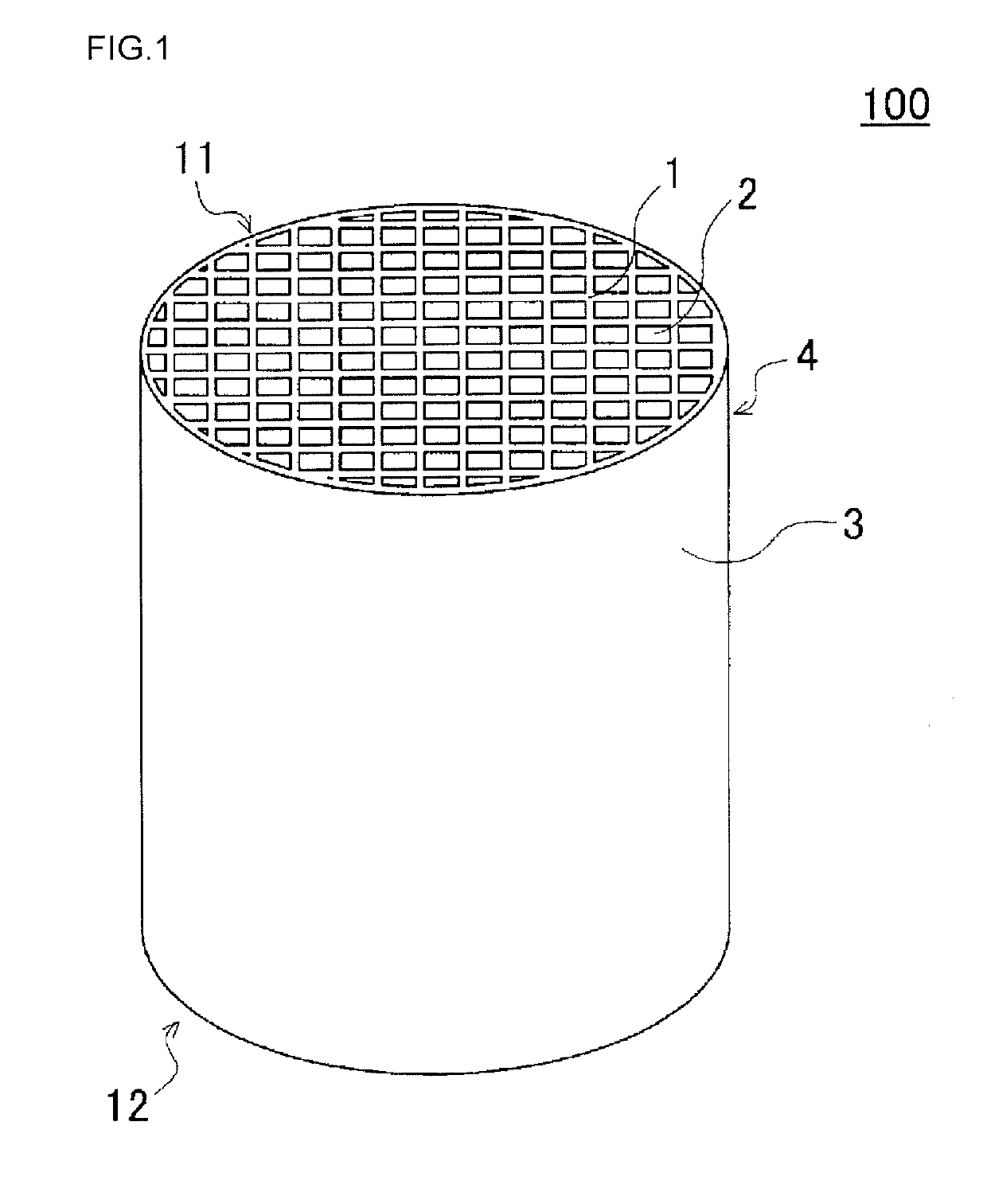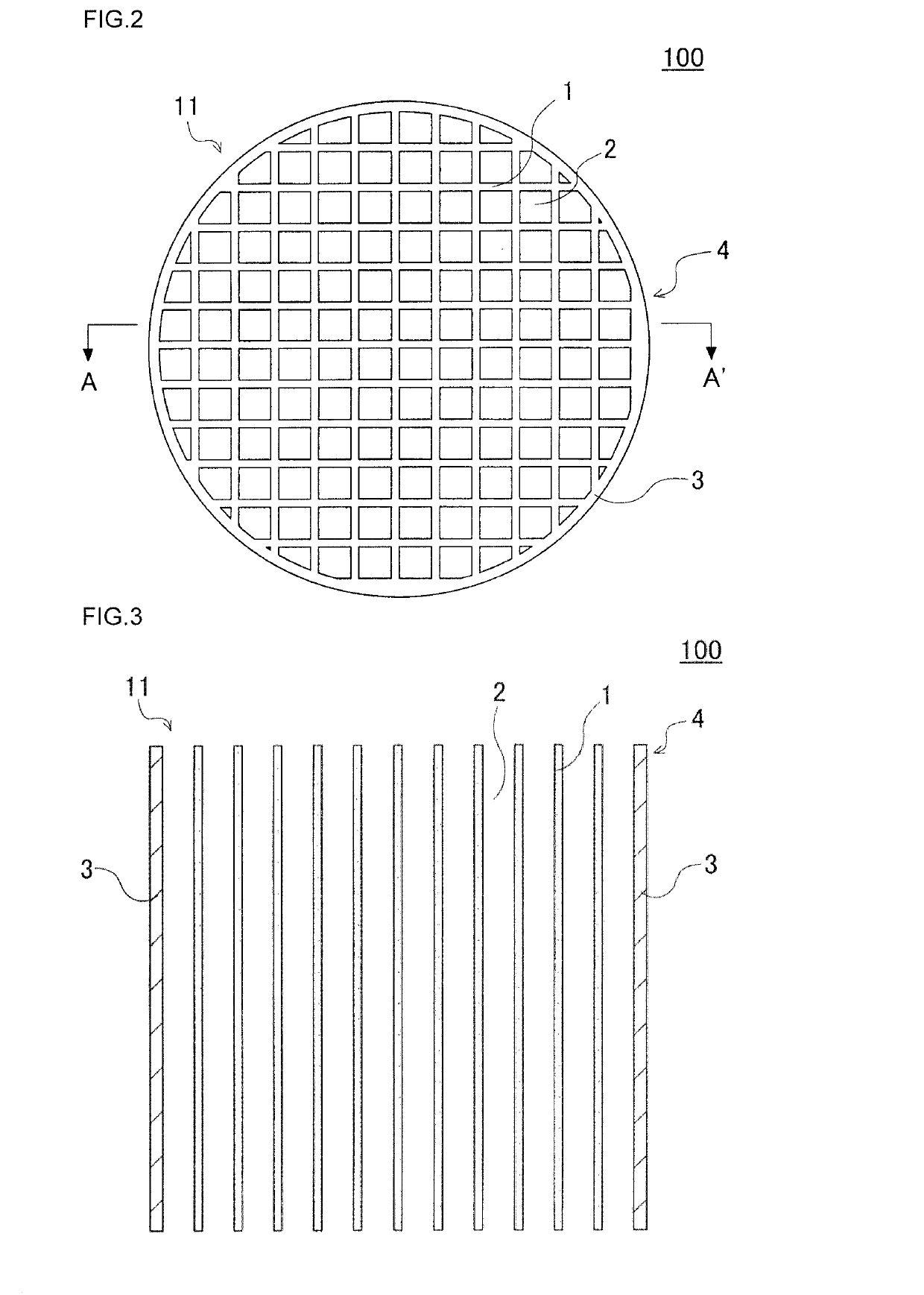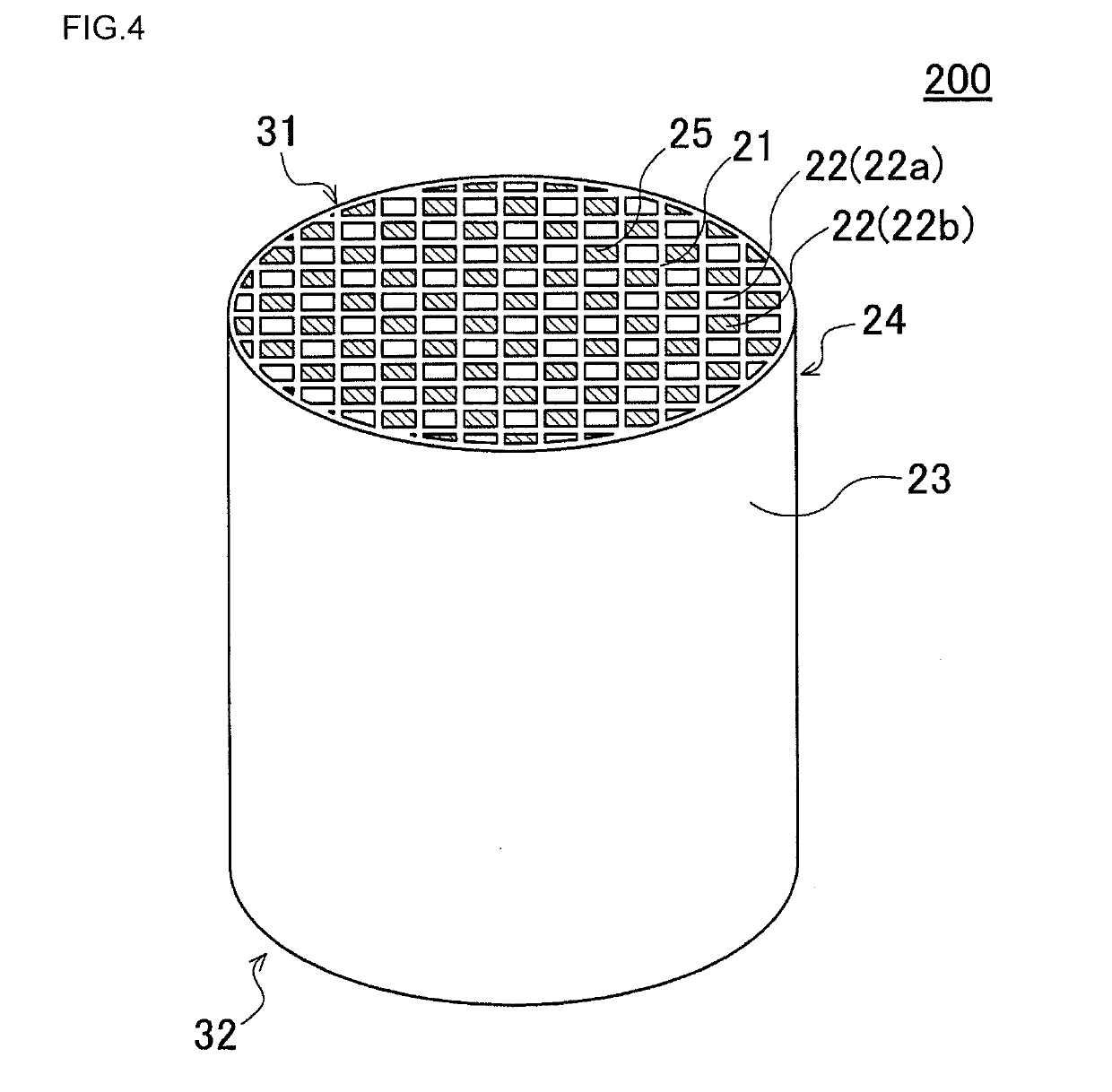Honeycomb structure
a honeycomb and structure technology, applied in the field of honeycomb structures, can solve the problems of uneven filling of pores with catalysts, large pressure loss, and inability to evenly fill pores of partition walls, etc., to suppress an increase of pressure loss, reduce the number of pores with pore, and increase the filling rate of catalysts
- Summary
- Abstract
- Description
- Claims
- Application Information
AI Technical Summary
Benefits of technology
Problems solved by technology
Method used
Image
Examples
first embodiment
(1) Honeycomb Structure (First Embodiment)
[0023]A first embodiment of the honeycomb structure of the present invention is a honeycomb structure 100 as shown in FIGS. 1 to 3. FIG. 1 is a perspective view schematically showing the first embodiment of the honeycomb structure of the present invention. FIG. 2 is a plan view showing the side of a first end face of the honeycomb structure of FIG. 1. FIG. 3 is a schematic cross-sectional view taken along the line A-A′ of FIG. 2.
[0024]As shown in FIGS. 1 to 3, the honeycomb structure 100 of the present embodiment includes a pillar-shaped honeycomb structure body 4 having a first end face 11 and a second end face. The honeycomb structure body 4 has a porous partition wall 1 that surrounds a plurality of cells 2, and the plurality of cells extends from the first end face 11 to the second end face 12 of the honeycomb structure body and serves as a through channel of fluid. In the honeycomb structure 100 of the present embodiment, the honeycomb ...
second embodiment
(2) Honeycomb Structure (Second Embodiment)
[0041]The following describes a second embodiment of the honeycomb structure of the present invention. The second embodiment of the honeycomb structure of the present invention is a honeycomb structure 200 as shown in FIGS. 4 to 6. FIG. 4 is a perspective view schematically showing the second embodiment of the honeycomb structure of the present invention. FIG. 5 is a plan view showing the side of the first end face of the honeycomb structure of FIG. 4. FIG. 6 is a schematic cross-sectional view taken along the line B-B′ of FIG. 5.
[0042]As shown in FIGS. 4 to 6, the honeycomb structure 200 of the present embodiment is a honeycomb structure 200 including a honeycomb structure body 24 and a plugging portion 25. The honeycomb structure body 24 is a pillar-shaped body including a porous partition wall 21 that surrounds a plurality of cells 22, and the plurality of cells extends from a first end face 31 to a second end face 32 of the honeycomb st...
example 1
[0053]2.5 parts by mass of a pore former, 60 parts by mass of a dispersing medium, and 6 parts by mass of an organic binder were added to 100 parts by mass of the cordierite forming raw material, followed by mixing and kneading to prepare a kneaded material. As the cordierite forming raw material, alumina, aluminum hydroxide, kaolin, talc, and silica were used. As the dispersing medium, water was used. As the organic binder, methylcellulose was used. As the dispersing agent, dextrin was used.
[0054]As the pore former, an water absorptive polymer having the average particle diameter of 20 μm was used. The pore former that has been used showed the following values in the curve indicating the relationship between the particle diameter of the pore former and the cumulative volume (a value obtained by accumulating the volume values of particles having a certain particle diameter or less). More specifically the pore former that has been used showed, in the curve, the particle diameter d90 ...
PUM
| Property | Measurement | Unit |
|---|---|---|
| porosity | aaaaa | aaaaa |
| pore diameter | aaaaa | aaaaa |
| pore diameters | aaaaa | aaaaa |
Abstract
Description
Claims
Application Information
 Login to View More
Login to View More - R&D
- Intellectual Property
- Life Sciences
- Materials
- Tech Scout
- Unparalleled Data Quality
- Higher Quality Content
- 60% Fewer Hallucinations
Browse by: Latest US Patents, China's latest patents, Technical Efficacy Thesaurus, Application Domain, Technology Topic, Popular Technical Reports.
© 2025 PatSnap. All rights reserved.Legal|Privacy policy|Modern Slavery Act Transparency Statement|Sitemap|About US| Contact US: help@patsnap.com



